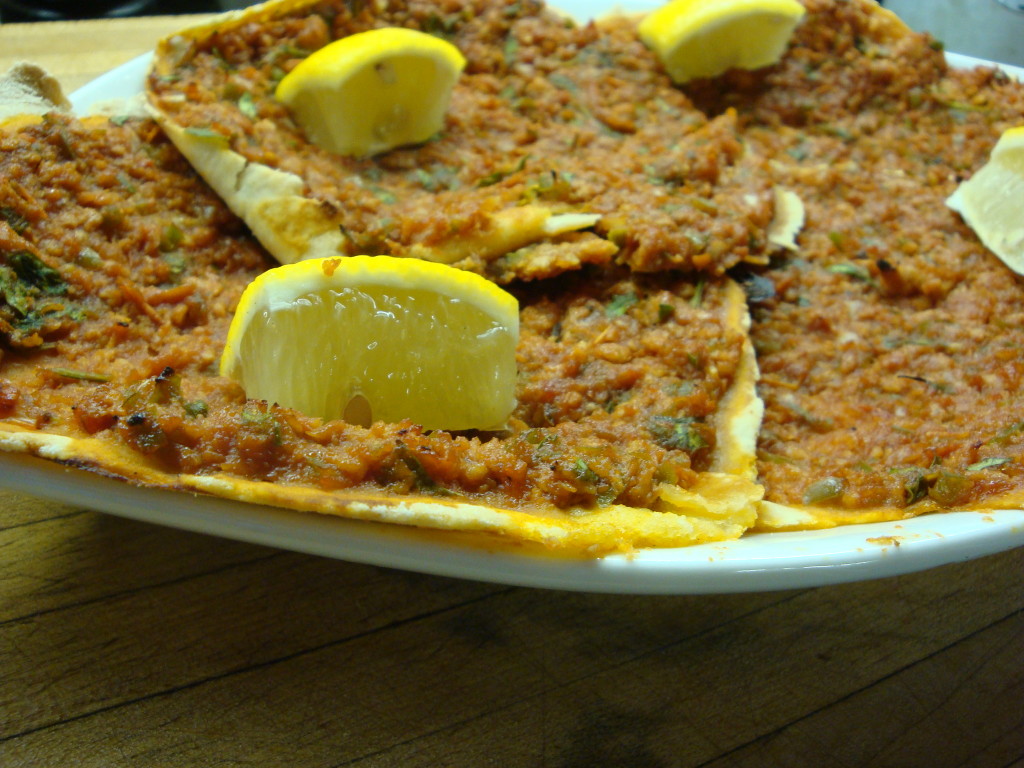On Sunday supplement
Food and Wine
You have that friend who’s a vegetarian, you know the one. Always going on about seitan and tempeh and quorn and tvp. You nod and smile as if you actually know what those are and then promptly excuse yourself, rush off to the nearest parrilla stand and order a vaciopan “extra jugoso” just to recover your inner balance and put everything right in the world. You know that, perhaps, you ought to be eating two or three fewer chorizos per weeks, but they’re just so darned good, and the idea of “meat substitute”, well, that’s a conversation best left for, well, never.
But, we’re going to have it anyway. You’re all grown up now, you can handle it. And today we’re going to tackle “tvp”, or “textured vegetable protein”. We’ll set seitan, or wheat gluten, to the side because here you either have to make it yourself or for the most part trek to Barrio Chino to buy it; tempeh, a sort of fermented version of tofu, is near non-existent; and quorn, a mushroom based fake meat has yet to hit this riverbank. But, tvp is all around us, you can find it in virtually any dietetica, where it goes by the monikers soja texturizada or carne de soja.
It sounds like something industrial, and when it comes down to it, it is. Somewhere, in an evil factory, someone is taking mounds of soybeans and extracting all the soybean oil from it, leaving behind a high protein, fat free, soy flour. Someone else is taking that flour and heating it up and pressurizing it, and then extruding it… yes, I used the word extruding early on a Sunday morning, and forming granules or strips or chunks of what sort of looks like a golden colored packing material. All sounds really appetizing and gets you revved up to run to the dietetica right now, doesn’t it?
But here’s the thing – we eat all sorts of things that go through processes like this, and the cool thing about tvp is that it’s basically just 100% high protein soy – high protein like 50% by weight. It’s a completely blank, tasteless canvas, and is flavored by rehydrating it in whatever liquid you choose – most often something like a good soup stock, but you can use your imagination, where it takes on that flavor. From there, it can be used as a meat substitute.
Now, we’re going to start with the easy one – the granules – which basically, when rehydrated in a nice, dark, roasted vegetable stock, looks like ground beef. And that’s how we’re going to use it today. We’re going to make our very lahmajoon (or any of various other similar spellings), those lovely little open faced empanadas arabes that we find all around the town.
Lahmajoon – Armenian “Pizzas”
165 gm all purpose flour
1 teaspoon baking powder
½ teaspoon salt
3 tablespoons olive oil
approximately 175 ml warm water
2 garlic cloves
1 medium onion
1 small green pepper
120 gm TVP in granule
240 ml of warm vegetable stock (or water)
170 gm tomato paste
4 plum tomatoes (canned are fine here)
10-12 sprigs parsley
½ teaspoon ground cumin
½ teaspoon cayenne pepper
Salt and pepper
Lemon wedges, to serve
Mix dry dough ingredients together in a bowl, add olive oil and mix well with your fingers or a fork until it resembles wet sand. Add water, a little at a time as needed, to make a smooth dough – soft but not sticky. Knead a few minutes, then form into six equal size balls, then let rest for 15 minutes. Roll out into individual rounds. Heat the oven to 200°C.
Rehydrate the TVP in the stock until it has absorbed all the liquid – about 5 minutes. Finely chop the onion, garlic, parsley, green pepper and tomatoes. Add the TVP, tomato paste, cumin, cayenne, and salt and pepper and mix well – you can even pulse all this in a food processor if you prefer. The consistency should be wet and pasty, like a thick spread. And, spread a layer of the mixture onto flour rounds all the way to the edge. Bake directly on the oven rack for 8 to 10 minutes, or until the edges are browned and the filling is cooked through. If they begin to inflate in the oven like a pita bread, or pan arabe, pop them with a fork from the top. To serve, squeeze some lemon over the top and eat.
A series of recipes and articles that I started writing for the Buenos Aires Herald Sunday supplement, Food & Wine section, at the beginning of 2012. My original proposal to them was to take local favorite dishes and classics and lighten them up for modern day sensibilities. We’re not talking spa or diet recipes, but at the very least, making them healthier in content, particularly salt, fat and portion size. As time went by, that morphed into a recipe column that, while emphasizing food that is relatively “good for you”, wasn’t necessarily focused on local cuisine. At the beginning of 2013 I decided to stop writing for them over some administrative issues, but it was fun while it lasted.
